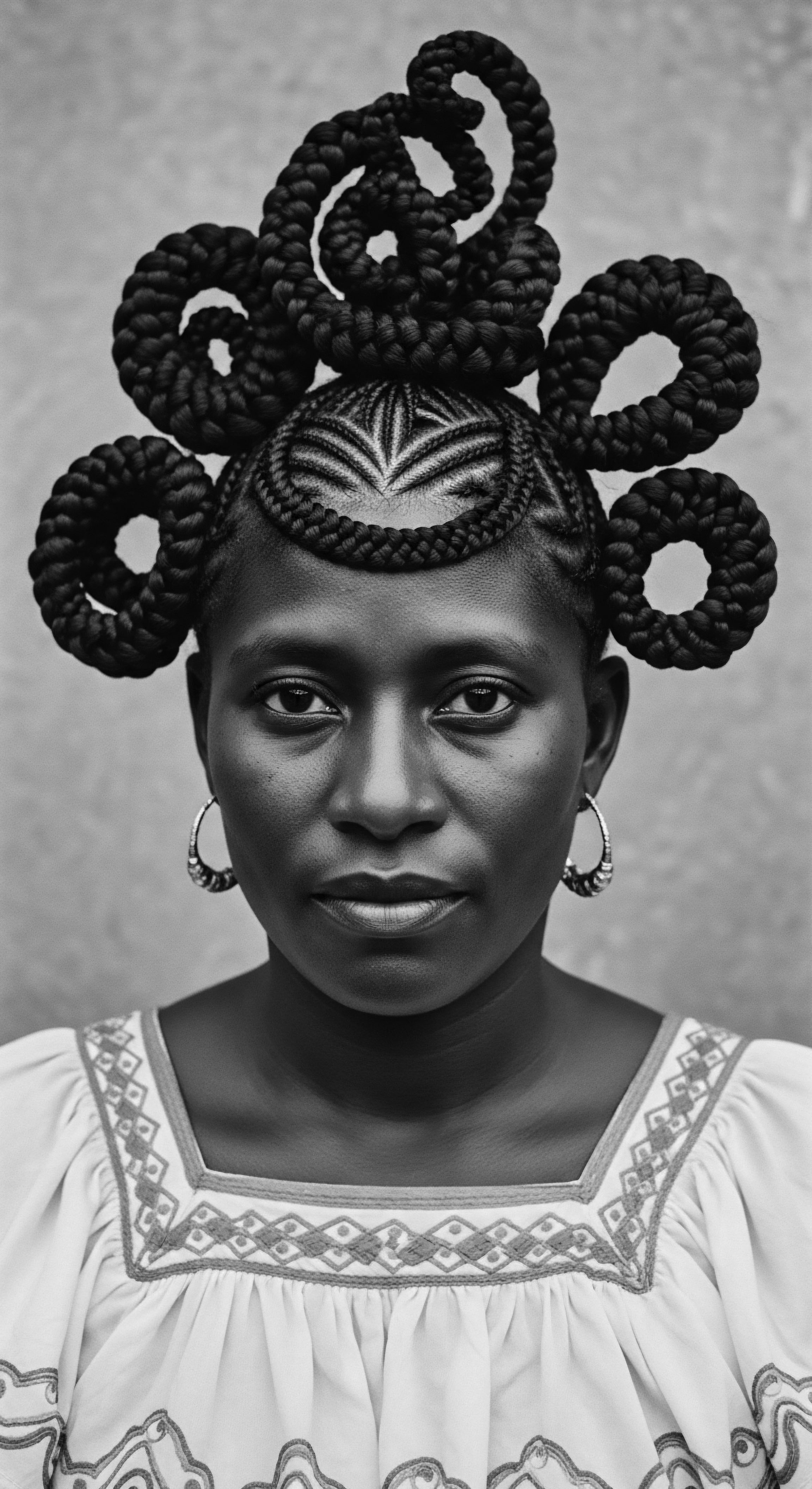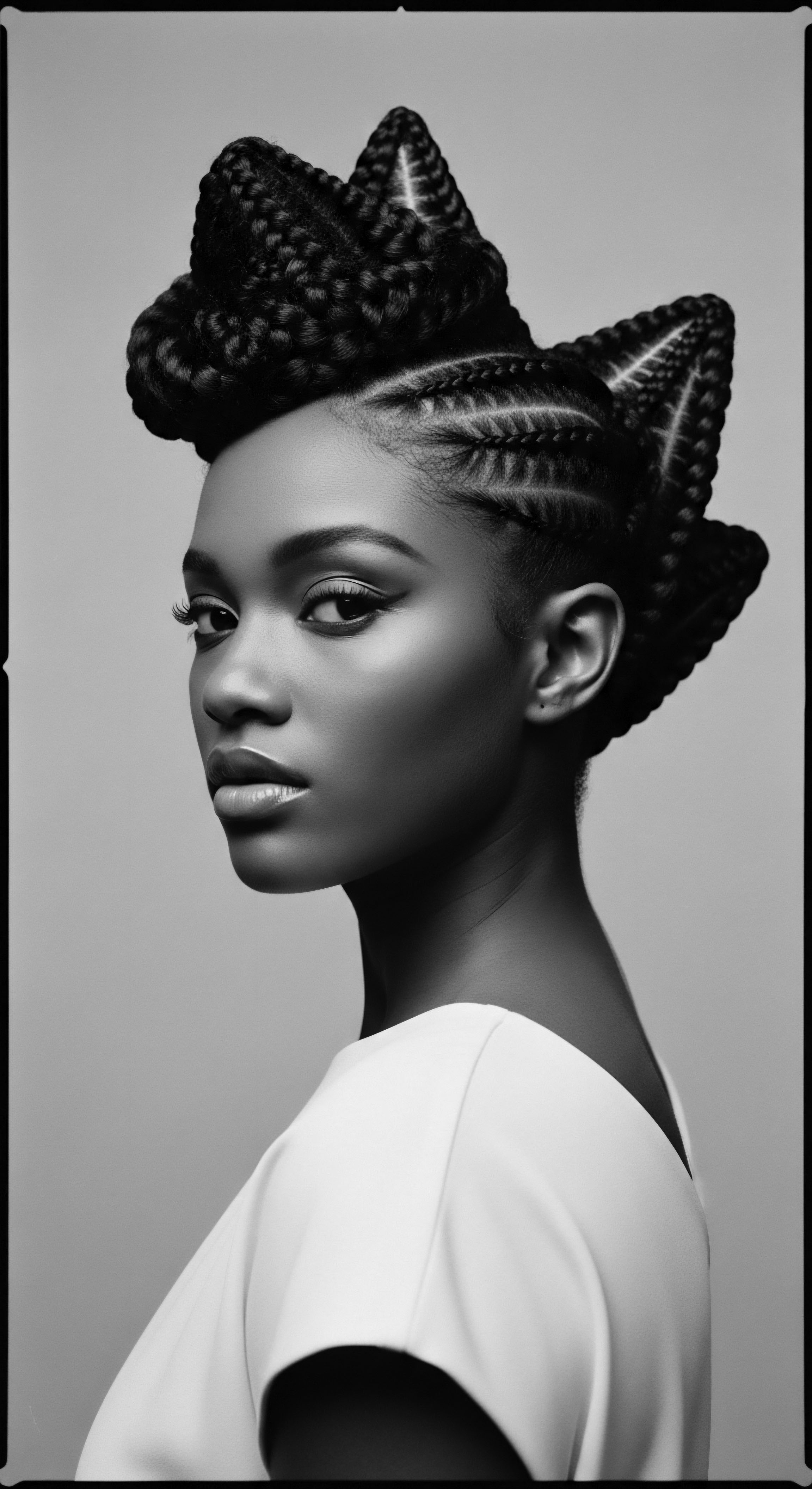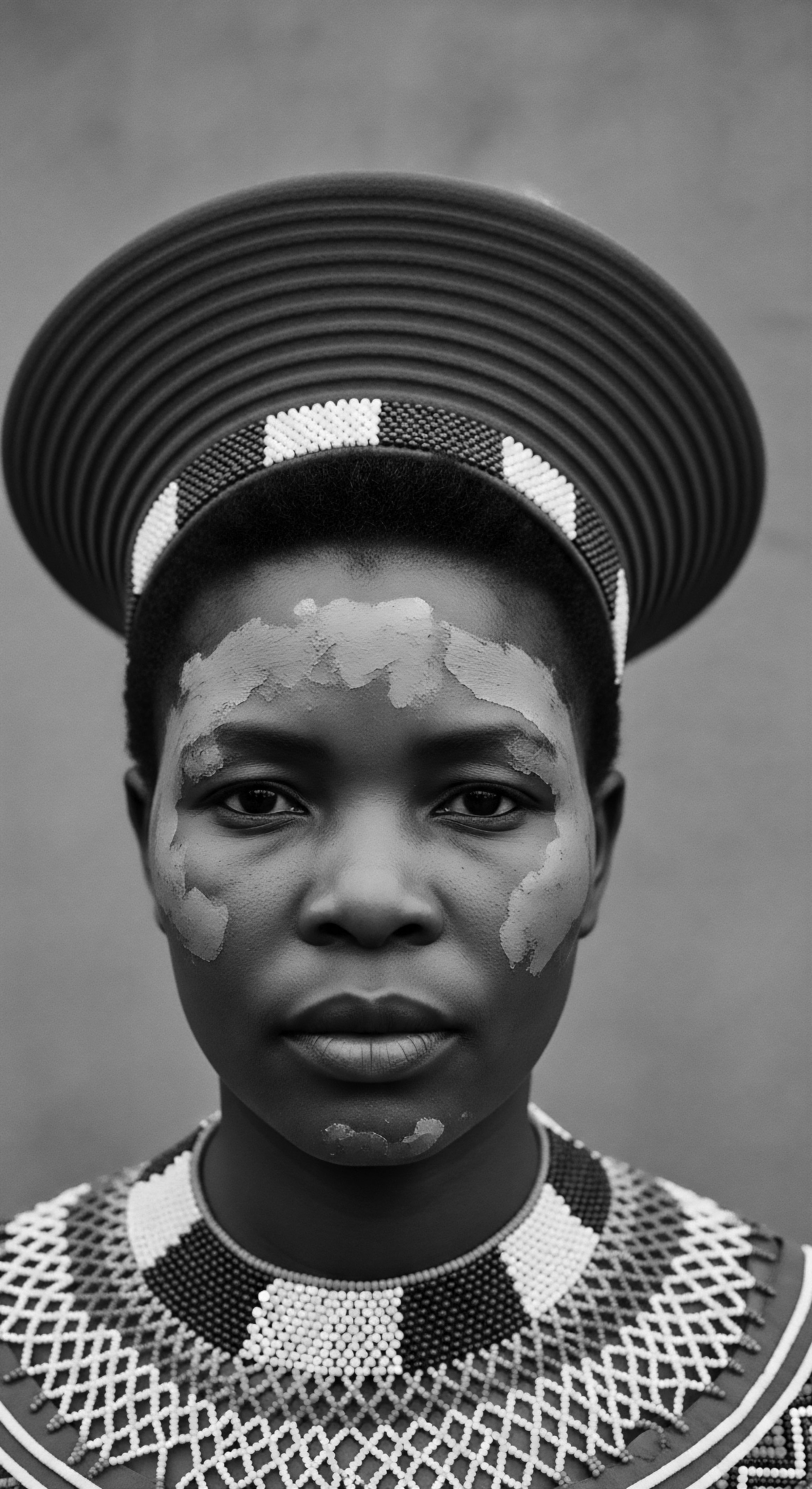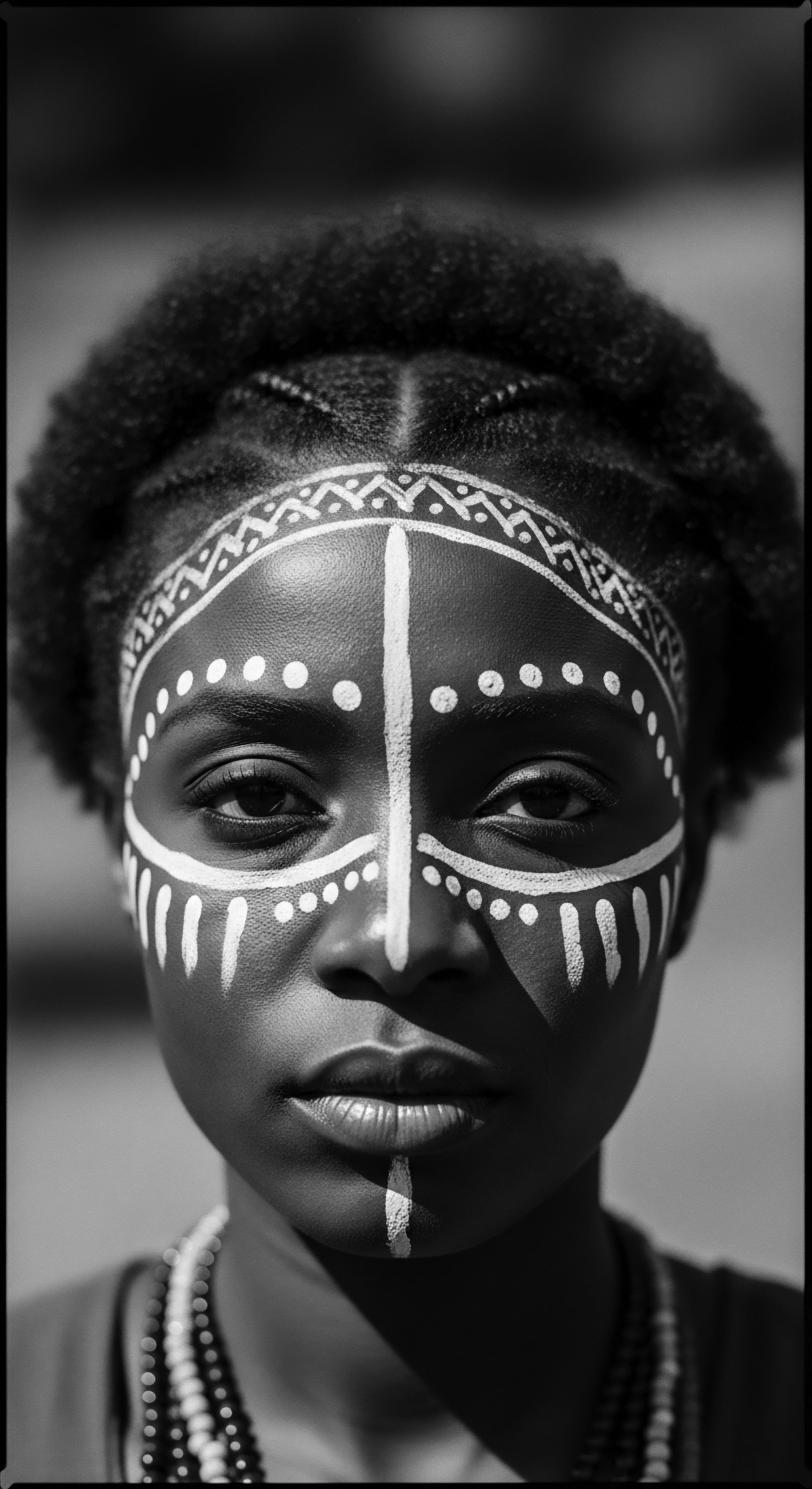The purpose of textured hair within diasporic communities extends far beyond mere aesthetic choice; it forms a profound anchor, a living archive of identity, resistance, and continuity. To truly comprehend this, one must journey through the intertwined pathways of science, history, and deeply held cultural practices, recognizing how each strand holds ancestral memory. These are not disparate threads, but rather a singular, vibrant current flowing through the collective consciousness of Black and mixed-race people across the globe.
What some might perceive as simply a hair type is, in truth, a testament to resilience, a sacred connection to heritage, and a powerful symbol of self-affirmation. The very structure of textured hair, with its unique follicular geometry and the distinctive coil patterns it yields, tells a story of adaptation and enduring beauty, a story that begins at the very source of humanity.

Roots
Consider a single curl, a tightly wound helix, or a soft wave. This physical attribute, seemingly simple, is laden with generations of meaning for diasporic communities. It represents a direct biological lineage, a visible tie to the African continent, and a deep, ancestral heritage. The unique architecture of textured hair, from its elliptical follicle shape to the way it grows from the scalp, influences everything from its tensile strength to its capacity for moisture retention.
This biological blueprint, passed down through bloodlines, has shaped not only how hair appears but also how it is cared for, adorned, and revered across various cultures and centuries. To truly appreciate the enduring purpose of textured hair, one must first look at these foundations, both physiological and historical.

What Defines Textured Hair at Its Core?
The science of textured hair commences within the scalp, at the follicle. Unlike the circular follicles that produce straight hair, textured hair emerges from an oval or kidney-shaped follicle. This distinctive shape compels the hair strand to grow in a curvilinear path, resulting in the characteristic coils, kinks, and curls. The more pronounced the ovality of the follicle, the tighter the curl pattern.
This inherent shape dictates many of hair’s properties ❉ its tendency towards dryness due to open cuticles at the curves, its susceptibility to breakage at points of extreme curvature, and its density. These biological characteristics have, for millennia, informed the development of care practices and styling techniques tailored to honor and protect these unique strands. Understanding these underlying biological realities is a primary step in grasping the profound connection to heritage.

How Do Hair Classification Systems Intersect with Identity?
Hair classification systems, while often intended to simplify understanding, carry a complex history, sometimes reflecting societal biases more than objective scientific reality. Early twentieth-century systems, such as Eugen Fischer’s “hair gauge” from 1908, aimed to categorize hair based on proximity to whiteness, effectively weaponizing hair texture in service of racist ideologies. The notorious Apartheid Pencil Test, where an individual’s classification as white hinged on whether a pencil could be held in their hair when shaken, further underscores this dark chapter.
The historical roots of hair classification reveal a deliberate, painful attempt to hierarchy human beings based on physical characteristics.
The system widely adopted today, introduced by Andre Walker in the 1990s, categorizes hair into four types (1-4, straight to coily) with subcategories (A-C) for varying curl tightness. While more consumer-focused, this system has received criticism for often privileging looser curl patterns, contributing to a phenomenon known as Texturism, where discrimination against Afro-textured hair favors smoother textures. This historical trajectory of classification, from instruments of oppression to tools of consumer segmentation, demonstrates how hair has always been, and continues to be, entangled with identity and societal perceptions, particularly within diasporic communities.
A deeper comprehension of textured hair requires a lexicon that respects both its scientific properties and its ancestral significance. Terms like Coily, Kinky, Wavy, and Curly describe the varying curl patterns. Beyond these, there are words that speak to the hair’s internal life ❉ Porosity, referencing its ability to absorb moisture; and Elasticity, its capacity to stretch without breaking. Yet, these scientific terms alone do not encompass the full story.
Within traditional African and diasporic cultures, terms for hair and its styles often carry spiritual, social, and communicative meanings. These words are not just descriptors; they are echoes of an ancient understanding of hair as a living, sacred entity, a conduit for spiritual connection, and a marker of status. The very practice of hair care was often an intergenerational dialogue, a passing down of wisdom embodied in ritual.
| Era or System Pre-Colonial Africa |
| Purpose or Context Identity marker, social status, spiritual connection, tribal affiliation. |
| Heritage Connection / Implication Direct expression of cultural identity, family lineage, and spiritual beliefs. Hair served as a visual language for communities. |
| Era or System Colonial Period & Slavery |
| Purpose or Context Tool of dehumanization, racial categorization, social control. |
| Heritage Connection / Implication Forced shaving and imposition of Eurocentric beauty standards to erase cultural identity and create a caste system. |
| Era or System Early 20th Century (e.g. Fischer's Hair Gauge, Pencil Test) |
| Purpose or Context Scientific racism, classification based on "proximity to whiteness." |
| Heritage Connection / Implication Perpetuation of racist ideologies, aiming to devalue Afro-textured hair as "inferior." |
| Era or System Andre Walker's Hair Typing System (1990s) |
| Purpose or Context Consumer-focused classification for product recommendations. |
| Heritage Connection / Implication While popular, it inadvertently contributed to texturism by implicitly favoring looser curl patterns. |
| Era or System Modern Holistic Approaches (e.g. Irizarry Hair Texture Scale) |
| Purpose or Context Comprehensive assessment incorporating physical and socio-cultural dimensions. |
| Heritage Connection / Implication A conscious effort to rectify historical biases, recognizing hair as a marker of identity and systemic inequities. |
| Era or System Understanding these systems, past and present, illuminates how hair, a biological inheritance, has been deeply intertwined with the social and cultural history of diasporic peoples. |

What Can Hair Growth Cycles Tell Us about Ancestral Wisdom?
The natural rhythm of hair growth, its cycles of activity, transition, and rest, has always influenced traditional hair care. Indigenous communities possessed a profound intuitive understanding of these cycles, even without modern scientific tools. They observed how environmental factors, nutrition, and stress could affect hair health, developing practices to support growth and retention. For instance, ancestral diets, rich in nutrient-dense plants and healthy fats, naturally provided the building blocks for strong hair.
The use of certain herbs and oils was not arbitrary; it stemmed from generations of observation regarding their effects on scalp health and hair strength. This ancestral knowledge, passed down through oral traditions and hands-on guidance, often aligns with contemporary scientific understanding of what hair requires for optimal health. It speaks to a heritage of observant wisdom, deeply rooted in the lived experiences of communities.

Ritual
The practices surrounding textured hair in diasporic communities are more than routines; they are enduring rituals, deeply imbued with memory, care, and cultural meaning. These acts, whether the intricate braiding of hair, the communal sharing of styling secrets, or the nightly protection of strands, form a continuous thread connecting past to present, forging a living heritage. Each motion, each ingredient, carries the weight of generations, testifying to resilience and a profound commitment to preserving a visible aspect of identity.

How Did Protective Styles Begin?
Protective styles, a cornerstone of textured hair care today, trace their origins to ancient African traditions, serving purposes far beyond mere adornment. Before forced displacement, complex hairstyles served as social identifiers, communicating age, marital status, tribal affiliation, and even spiritual beliefs. These styles, often involving intricate braids, twists, and locs, also served the practical aim of safeguarding the hair from environmental rigors and reducing manipulation, thereby promoting length retention. During the brutal period of enslavement, these practices transformed into acts of resistance and survival.
Enslaved women, stripped of their ancestral lands and often their names, used their hair as a covert means of communication. Stories recount how cornrows were braided to depict escape routes on plantations, or how seeds and gold were hidden within the styles for journeys to freedom. This stark example illustrates how a practice rooted in beauty and social connection became a defiant tool of liberation, a testament to the enduring human spirit. This living heritage of protective styling is not just about keeping hair healthy; it is about honoring a legacy of ingenuity and fortitude.
The legacy of these protective styles, whether Box Braids, Cornrows, or Twists, echoes through contemporary practices. These styles minimize daily manipulation, which is crucial for textured hair, prone to breakage due to its structural curves. The careful sectioning and intertwining of strands reduce friction, seal in moisture, and offer a respite from environmental stressors.
This knowledge, passed down through generations, has been validated by modern hair science, which confirms the benefits of reduced manipulation and strategic product application for maintaining length and overall hair health. The generational exchange of these techniques, often happening in communal settings like a shared living room or a bustling salon, reinforces community bonds and transmits cultural pride.

What Traditional Elements Defined Hair Care Practices?
Natural styling techniques, too, have roots that extend deep into history. Methods for defining curls, enhancing coils, and adding volume without heat were developed centuries ago, relying on natural elements and ingenious approaches. Traditional methods for hydrating and conditioning hair often involved a range of natural ingredients harvested from the local environment. For example, the Basara Arab Women of Chad have, for generations, used a powder called Chebe, a blend of indigenous herbs and seeds, to coat their hair, promoting length retention by minimizing breakage and sealing in moisture.
This tradition, passed down through ancestral rituals, stands as a testament to deep knowledge of natural botanical properties. Similarly, oils and butters like Shea Butter, derived from the Karite tree, have been central to hair care across West Africa for their moisturizing and protective properties, with its use tracing back to ancient times.
- Chebe Powder ❉ A traditional Chadian blend of herbs and seeds, valued for its ability to reduce breakage and help in length retention by coating hair strands.
- Shea Butter ❉ A rich butter from the African shea tree, used for centuries across West Africa for its deep moisturizing and protective qualities.
- African Black Soap ❉ A cleansing agent from West Africa, traditionally crafted from plantain peels, cocoa pods, and shea tree bark, offering a gentle cleanse for both skin and hair.
- Marula Oil ❉ Liquid gold from southern Africa, prized for its nourishing fatty acids and antioxidants, applied to hair for moisture and protection.
The practice of adorning hair with beads, shells, and intricate metallic elements also speaks to a profound history of self-expression and cultural identity. These adornments were not merely decorative; they could signify social standing, spiritual protection, or milestones in one’s life journey. The tools employed for hair care, too, hold historical weight.
While today we use specialized combs and brushes, earlier implements were often crafted from natural materials, each designed to respect and work with the inherent properties of textured hair. This interplay between natural ingredients, hand-crafted tools, and the communal act of styling underscores the holistic nature of ancestral hair care practices, revealing a deep respect for the hair as a living crown.

What Role Does Wigs and Hair Extensions Play in Heritage?
The story of wigs and hair extensions within diasporic communities is multifaceted, reflecting both practical needs and evolving cultural dynamics. In ancient Egypt, wigs were worn by both men and women for protection from the sun, cleanliness, and as symbols of wealth and status. This use of artificial hair for adornment and status has a long history that predates modern applications. As people of African descent navigated displacement and societal pressures, particularly during and after chattel slavery, hair alterations became a complex subject.
While sometimes a means to conform to Eurocentric beauty standards to avoid discrimination or attain social mobility, extensions and wigs also provided a way to experiment with styles, protect natural hair, and express individual identity within a constrained social environment. The choice to wear wigs or extensions in various forms, from intricate braided extensions that echo traditional African styles to flowing weaves that allow for versatility, holds a personal significance for many. It often balances a desire for aesthetic expression with the underlying understanding of hair as a form of cultural expression and resilience. This duality is an important part of the heritage conversation, acknowledging the adaptive strategies employed by communities to navigate changing social landscapes while maintaining a connection to beauty and self-determination.

Relay
The enduring purpose of textured hair within diasporic communities is not a static concept; it is a dynamic relay, a continuous transfer of knowledge, symbolism, and resilience across generations and geographies. This relay carries the weight of historical struggles and the vibrancy of cultural reclamation, constantly adapting to new social realities while remaining anchored in ancestral wisdom. It is a story told through the evolving relationship between hair and identity, a testament to its power as a medium for self-expression and collective consciousness.

How Does Textured Hair Reflect the Soul of a Community?
Textured hair serves as a profound marker of identity for Black and mixed-race people, a visible tie to a shared lineage and a collective experience of both oppression and triumph. The very act of caring for and styling textured hair often represents a conscious choice to honor ancestral practices and reject imposed beauty standards. As documented by Johnson and Bankhead (2014), in a survey of 529 Black women, 95% reported wearing their hair naturally at least some days, with a significant majority choosing natural styles despite experiencing some discrimination. This statistic speaks to a powerful internal validation, where the intrinsic value of natural hair outweighs external pressures, a clear sign of its profound purpose.
The authors also highlight that while 25% of respondents experienced discrimination when wearing their hair naturally, the overwhelming majority (74%) did not experience “very much” or “any” discrimination, indicating a shifting, though still challenged, landscape of acceptance. This points to the ongoing strength found in collective identity and the gradual, yet persistent, reclamation of cultural aesthetics within diasporic communities. The hair becomes a medium through which narratives of self-acceptance and pride are written, resisting centuries of societal conditioning that often labeled kinky or coily textures as less desirable. The bond between hair and identity is so deep that many women recall childhood experiences where elders taught them, “your hair is your crown and glory,” reinforcing its sacred status.
The journey of textured hair through the diaspora also reveals a consistent narrative of adaptation and ingenuity. Faced with new environments and limited resources, communities innovated, repurposing available materials and refining techniques to maintain hair health and style. This creative adaptation speaks to the inherent resilience embedded in the heritage of textured hair care.
From the use of specific oils and butters for moisture in arid climates to the development of complex braiding methods for protection during arduous journeys, each adaptation reinforced the hair’s role as a symbol of endurance. The hair, in its very being, refused to be homogenized, continuing to tell a story of origins and strength.

What is the Connection Between Textured Hair and Social Justice?
Throughout history, textured hair has been at the forefront of social justice movements, a visible protest against racial subjugation and a rallying point for cultural pride. During the era of slavery in the Americas, the forced shaving of heads was a deliberate act of dehumanization, stripping individuals of their cultural identity and ancestral connection. Later, the imposition of Eurocentric beauty standards created a hierarchy within Black communities, where straighter hair was deemed “good hair” and was often a prerequisite for social and economic advancement. The Crown Act in the United States, legislation prohibiting race-based hair discrimination, stands as a modern example of the ongoing struggle for hair freedom and equity.
This legal battle underscores the reality that for many in the diaspora, their hair remains a site of contested identity, still subject to bias in workplaces and schools. The very existence of such legislation demonstrates the enduring, necessary purpose of textured hair as a symbol of resistance and a demand for recognition and respect.
The politicization of Black hair reached a zenith during the Civil Rights and Black Power movements of the 1960s and 70s, where the Afro became a powerful symbol of Black pride and self-acceptance. This unapologetic embrace of natural texture challenged centuries of systemic oppression and redefined beauty norms within and beyond the community. The movement declared that Black beauty, in its authentic form, was valid and powerful.
Today, the natural hair movement continues this legacy, advocating for holistic wellness and celebrating the vast diversity of textured hair. It is a movement that finds strength in collective identity, sharing knowledge, and promoting self-love, all of which contribute to the enduring purpose of textured hair as a symbol of cultural sovereignty.
- Afrocentricity ❉ A framework emphasizing African cultural values and perspectives, profoundly influencing the reclamation of natural hair as a symbol of Black pride.
- Tignon Laws ❉ Historical mandates in colonial Louisiana that forced Black women to wear head coverings, ironically leading to elaborate and defiant headwraps.
- Natural Hair Movement ❉ A contemporary social and cultural phenomenon promoting the acceptance and celebration of natural, unprocessed Afro-textured hair.
This journey from ancestral communication to a symbol of resistance and, ultimately, self-affirmation, illustrates the hair’s constant dialogue with history and society. It holds the echoes of forced conformity, the strength of rebellion, and the quiet dignity of self-acceptance.

Reflection
As we consider the profound journey of textured hair within diasporic communities, its purpose is revealed as a vibrant, living library of heritage. Each coil, every strand, holds stories of survival, artistry, and an unyielding spirit. It is a testament to the enduring human need for connection—to ancestors, to community, and to a fundamental sense of self. From the elemental biology that shapes its unique forms to the elaborate rituals of care and adornment, textured hair remains a central element in voicing identity and shaping futures.
It is a reminder that beauty standards, too often imposed, can be redefined from within, grounded in ancestral wisdom and an authentic appreciation for one’s inherent self. This deeper understanding affirms that textured hair holds not merely purpose, but a sacred, irreplaceable place in the collective memory and ongoing narrative of a resilient people.

References
- Byrd, Ayana D. and Lori L. Tharps. Hair Story ❉ Untangling the Roots of Black Hair in America. St. Martin’s Griffin, 2014.
- Dabiri, Emma. Twisted ❉ The Tangled History of Black Hair Culture. Harper Perennial, 2020.
- Davis-Sivasothy, Audrey. The Science of Black Hair ❉ A Comprehensive Guide to Textured Hair Care. Saja Publishing Company, 2011.
- Johnson, Terri, and Tiffany Bankhead. “Hair It Is ❉ Examining the Experiences of Black Women with Natural Hair.” Open Journal of Social Sciences 2, no. 1 (2014) ❉ 86-100.
- Rosado, Sybil Dione. “Nappy Hair in the Diaspora ❉ Exploring the Cultural Politics of Hair Among Women of African Descent.” PhD diss. University of Florida, 2007.
